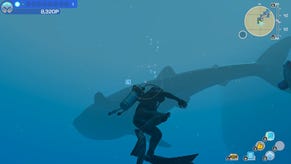Goodbye, P.T.: Inventive, brilliant, and troubled
RIP, P.T.
Spoiler warning: This article contains lots and lots of spoilers for P.T. and the movie The Cabin in the Woods. They're both brilliant and we don't want to ruin them for you, so check them out before you read on.
P.T. feels like a loop. The entire experience plays out in an L-shaped length of corridor, a neat chunk of suburban home rendered impossible and Pac-Man-like by the fact that the door at the far end drops you back to the door at the start. You move through the space again and again, stuck deep within the machine. What's changing, and what stays the same? Are the walls growing dirtier? Is the art moving about when you aren't looking?
But P.T. is not a loop. It's a spiral. Just before you head through the second door, you jog down a short flight of steps, which means that every time you pass along that L-shaped corridor in its entirety, you're actually descending, corkscrewing deeper and deeper and bound, presumably, for that infernal place all horror fiction ultimately orbits. P.T. is full of stuff like this: stuff you only notice on your second, your third, your tenth visit. This weekend, hearing the sad news that Konami will be yanking the whole thing from PSN this coming Wednesday now that the game it was created to promote has apparently been cancelled, I headed back in. A miserable day for Silent Hills, but I was still surprised and delighted at what I found.
Like a lot of horror art, P.T. offers a very different view the second, the third, the tenth time you visit. You notice the brilliance a little more: the audacious economy of a design that allows a small group of assets, perhaps rendered in prohibitively expensive detail, to entertain and terrify for a whole hour or more. You also see the things that P.T. does that would have made Silent Hills a properly fascinating prospect - a horror game that truly understood the nastiness of the nearly-mundane, of a banana slowly going mouldy on a desk, of children's sweets mingling dangerously with prescription medicine, all scattered next to a phone that's been left off the hook. Even before you've seen a door move by itself and before that first ghostly entity has raced through your peripheral vision, the creeping tension has started to gather, and it has nothing to do with fantasy. Rain splatters against dark glass, the voice on the radio talks of domestic murder, the readout on a digital clock reads 23:59 - a time when nothing good, surely, is ever likely to happen.
For all this luminous design intelligence, though, you may also notice a charming cheapness, or rather an anything-goes creakiness to some of the tricks that P.T. is willing to pull. A muffled fist will bang on a door as you pass, and then cease when you stop walking. The overhead lights will go off, and when they come back on, cockroaches will be skittering up the wall. The door you're headed for will ease itself shut as you approach, while another will whisper open behind you. Eventually, there is psychosis, or something like it, as the radio starts to address you directly. Eventually, there are ghosts.
Horror often has a moment that fear cannot quite survive - a moment where you see the monster, and it's just a guy in a suit, or worse yet it's just a monster. For P.T., I think there are two instances like this, and they're both equally damaging. The first is in the bathroom, where you encounter a weird foetus-thing lying in the sink, slowly breathing in and out, its chickenish body rising and falling. This is a problem that is specific to P.T., I suspect: compared with the brilliantly convincing set that lies around it, the tactility of those greasy walls, the weft of the uneven parquet flooring, this strange fellow in the sink is a jarring digital prop. It does not speak of netherworlds or the unconscious. It speaks of textures and rigging and a couple of cross-department breakout meetings, perhaps, to brainstorm lists of things that would really unnerve people.
Later on, there's a different kind of problem: progress suddenly hinges on a treasure hunt, as you collect fragments of a torn-up photograph, one of which is hidden, with a certain self-reflexive cuteness, inside a menu screen. The problem this time isn't specific to P.T., but it is specific to games. As soon as there's an objective in view, a different part of the player's mind starts to engage. You pull yourself out of the giddy bewilderment of the here and now, and you see the landscape more clinically: a place of trigger points and discrete tasks, a place where you can progress. You are no longer a witness, the role that so much great horror requires you to play. You may start to set aside what's going on in front of you, even, as you focus on what could be coming next. Too late! The pattern-spotting has kicked in, and the potential for true fear is diminished - weakened by the more familiar promise of achievement.
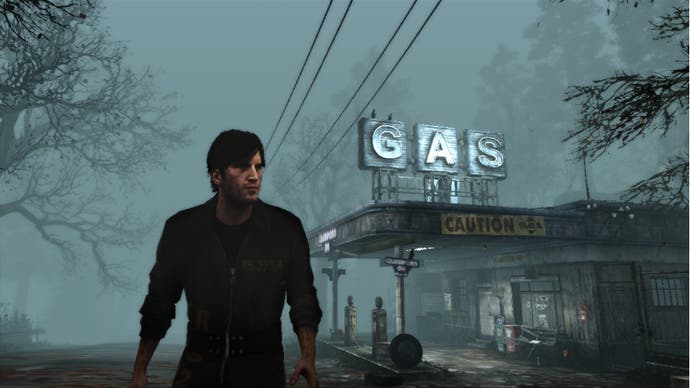
None of this is actually a serious criticism of P.T., although I appreciate that it probably sounds like it. Sure, the more of P.T. I play the less scary it is, but that's inevitable with anything that depends on shocks, on jump scares, on not knowing the limits. What makes P.T. special for me is that the less scary I find it, the more interesting it actually becomes. It's a home-run first time around, a bracingly distinct approach to horror games, compact and devilish and darkly witty. After that, though, it starts to feel more problematic, and the problems it picks at are pretty thrilling.
I didn't just play P.T. this weekend. I also re-watched The Cabin in the Woods, and I'm starting to suspect there are deep similarities between that film and this game. In fact, I think they're both responses to the same problem - the problem of audiences, of what the audience wants, or perhaps of what it thinks it wants. The Cabin in the Woods - it's great, and I'm about to spoil it, so please forget all this and go watch it if you haven't see it yet - is a film about a group of students who go away for the night to a shack in the middle of nowhere. Over the course of the film, you discover that the shack is effectively a set, and that the students have been chosen as a sacrifice for ancient gods, living deep underground, who demand ritualised blood-letting on a regular basis or else they will destroy the world.
It's not hard to unravel this, really, although my analysis is probably a bit simplistic. The Cabin in the Woods isn't a horror film so much as it's a film about why horror films exist, the traditions they draw on and the forces that shape them. Between the students, about to get killed, and the ancient gods, primed to enjoy it, there's a layer of creative bureaucracy, a group of white collar guys and grunting techies who make sure the entire grisly deal goes according to plan, whether it's allowing the kids a chance to turn back early on, getting them all sexy so that, by the gods' prim narratological standards, they deserve to die, or even blocking off the roads so that they can't escape once they have sealed their own fates. These bureaucrats and techies are the artists here: the directors, the producers, and the writers. The gods? They're the audience, and the point the film seems to be making is how destructive, how hollow and dissatisfying this relationship becomes when the artists aren't allowed to deviate from the established rituals, and when they realise that the only thing left for them to do is get more creative with the splatter.
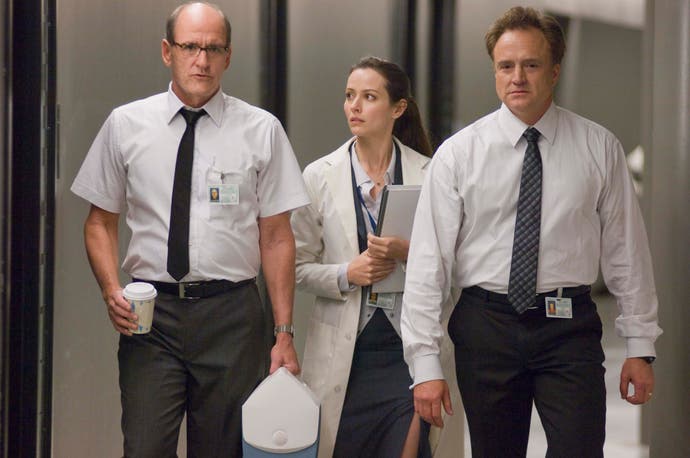
How creative? There's a moment early on in The Cabin the Woods where the students go down into the basement and discover that they're inside a clearinghouse for every horror idea imaginable. There are torture devices, ancient diaries and spells, creepy music boxes, stuffed animals: the material reality of an entire genre is laid out in plain sight, just as it is in P.T. where you have the banging, the whispering and creaking, the wail of a baby, the lash of rain, and where it is emphatically, perpetually, a dark and stormy night.
Ingenious as it is, P.T. can seem trapped within gaming's equivalent of the same system that binds Cabin's jaded bureaucrats - inside the spiral that restricts both player and designer. The need for progress, for some kind of denouement, means that you also need structures, objectives, treasure hunts, and a backstory, all of which will almost immediately become recognisable and, by extension, quietly mystery-sapping. Half-way through P.T., it becomes clear to the player that the real force moving around them in the darkness, rearranging things when they aren't looking, slamming doors, flicking on and off the lights and marshalling the creepy-crawlies isn't a malevolent spirit at all, but rather a team of creatives, same as always - prepping what you're about to see, cleaning up what you've just done.

So what would be really scary? I have no idea, and isn't that the whole point? At a push, something that probably wouldn't be particularly satisfying, anyway. What if the spiral of L-shaped corridors continued forever and nothing really changed? What if the escalation happened internally as you grew more paranoid, as you started to realise that there was no light - no cut-scene - waiting for you at the end of all of this? It's telling that the moment that really stuck with me from my first playthrough of P.T. wasn't the bit where the radio spoke to me, or even the bit where the ghostly lady jumped on me from an alcove, although I leapt and sluiced tea at that with the best of them. It was the bit where I looked up suddenly to see what seemed to be a refrigerator dangling above me and leaking blood in the shadows of a part of the house I had not yet noticed. It's also the bit that I genuinely couldn't account for.
Listen to the radio, to that news report with its tale of murder. A father snapped and killed his family, apparently, and he lured his daughter out of safe hiding by telling her, "It's only a game". P.T.'s only a game, but the cancellation of Silent Hills and its own disappearance from PSN later this week may work one final trick that truly elevates it. Back when I was at school, 12 or 13 and just the right age to be scared by horror films that I shouldn't, in truth, have been watching, the ones that really got to me were the ones I didn't actually see. The legendary ones that were argued about in the playground, that were spotted - allegedly - on an unmarked VHS by the friend of a friend of a friend, and even then they could only watch half of the thing before it got too frightening. As of this Wednesday, unless you have P.T. on your hard-drive, it will live on in ageing YouTube playthroughs, in frantic playground deconstruction, in the sweaty chambers of group memory. It will finally have escaped its digital confines, and the final structures that held it back will be gone.




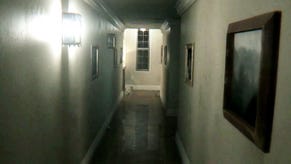
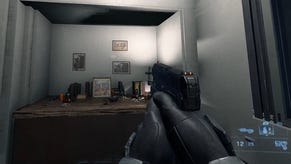
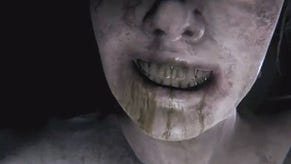
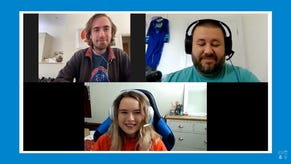

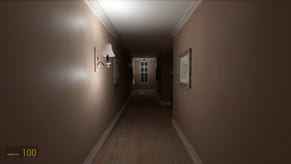




.jpg?width=291&height=164&fit=crop&quality=80&format=jpg&auto=webp)
_Rwmp6uD.jpg?width=291&height=164&fit=crop&quality=80&format=jpg&auto=webp)
